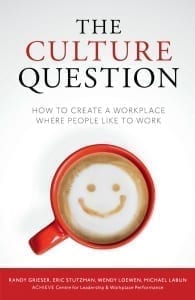Creating a Conducive Work Environment
Your employees are the backbone of the business. Even with great ideas and business plans, nothing can get done without your team. That is why providing them with a place to work that is a conducive work environment helps to ensure that they can do their work in a much more productive and effective manner. How can you create a work environment that is effective, without having to raise costs? Here are some things to think about.
Remove bad vibes
If there are any employees who are getting into ‘trouble’ with their coworkers on a regular basis, then they create some unnecessary stress and unnecessary tension in the workplace. This can impact more people and stop them from doing their job as they would like to. So it is important to step in as management when this kind of thing happens, to give them enough warning so they can adjust their attitude, and take steps to deal with the issues. When it comes to hiring new people, look for people who will be a good fit for the role, but also fit into the culture of the business and existing team. A mix of personality and skills is a must for new candidates.
Incorporate branding into the workspace
We all know that when employees are at work, they will also be thinking about other things, and doing some other things. They might need to take a personal call, book an appointment on their lunch break, or deal with a personal issue when getting on with their workload. Which is why having some branding in the office can make a big difference. When the theme of the business and the brand runs throughout the work space, it can spark creativity, and helps give employees a focus when working. They only have to look around and see a custom flag or brand colors on the wall to remember where they are and what they should be doing. Simple things can make a difference and help your team to work more productively.
Use technology
It is so important to look at and harness the power of technology in the workplace. It can streamline what you are already doing, and improve things like management, cash flow, and other aspects of the business that can be prone to human error. Technologies and collaboration tools so cost the business money. They also need to involve some learning, which is why some businesses can be shy to use them and embrace them as much as they could. The costs associated will pale in comparison to the benefits that can be gained, so that is an important thing to think about.
An effective and productive work environment for your team is one that is not just rewarding for your team and the business, but one that is also safe. Look for ways to make the office a safe space to be, and that can help too. People aren’t going to stay working with you if they are just working in an office space that is full of accidents that are waiting to happen.



 Omar L. Harris is Associate Vice-President and Country Manager for Allergan PLC in Brazil. He is the author of
Omar L. Harris is Associate Vice-President and Country Manager for Allergan PLC in Brazil. He is the author of  When my children were taking violin lessons and were given a new piece to learn, they would start from the beginning and race through the song at breakneck speed. One day, their teacher offered an insight that radically altered how they were able to progress. He told them that if they wanted to play fast, they would first have to practice slow. Similarly, taking the time to slow down and plan improvements to workplace culture also produces more effective results down the line.
When my children were taking violin lessons and were given a new piece to learn, they would start from the beginning and race through the song at breakneck speed. One day, their teacher offered an insight that radically altered how they were able to progress. He told them that if they wanted to play fast, they would first have to practice slow. Similarly, taking the time to slow down and plan improvements to workplace culture also produces more effective results down the line. Wendy Loewen is a mediator, facilitator, and the Training Development Specialist at ACHIEVE Centre for Leadership & Workplace Performance. She is co-author of the book,
Wendy Loewen is a mediator, facilitator, and the Training Development Specialist at ACHIEVE Centre for Leadership & Workplace Performance. She is co-author of the book, 
 Hilary Jane Grosskopf is the author of
Hilary Jane Grosskopf is the author of  Karen J. Hewitt, author of Employee Confidence: The New Rules of Engagement, is an Engagement and Culture Change specialist who is fluent in five languages. Her book is a finalist in the Leadership category of the Business Book Awards 2019.
Karen J. Hewitt, author of Employee Confidence: The New Rules of Engagement, is an Engagement and Culture Change specialist who is fluent in five languages. Her book is a finalist in the Leadership category of the Business Book Awards 2019.